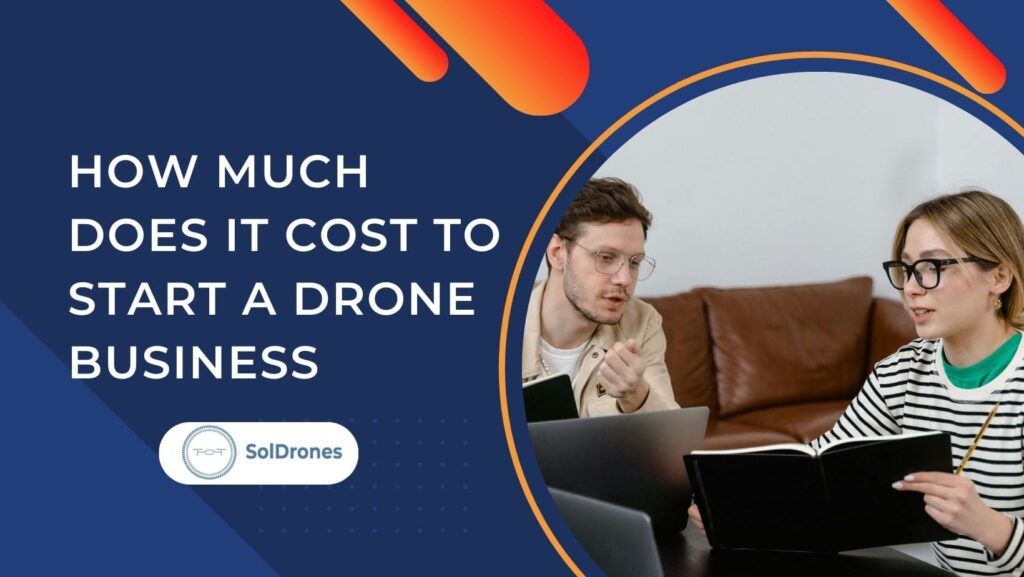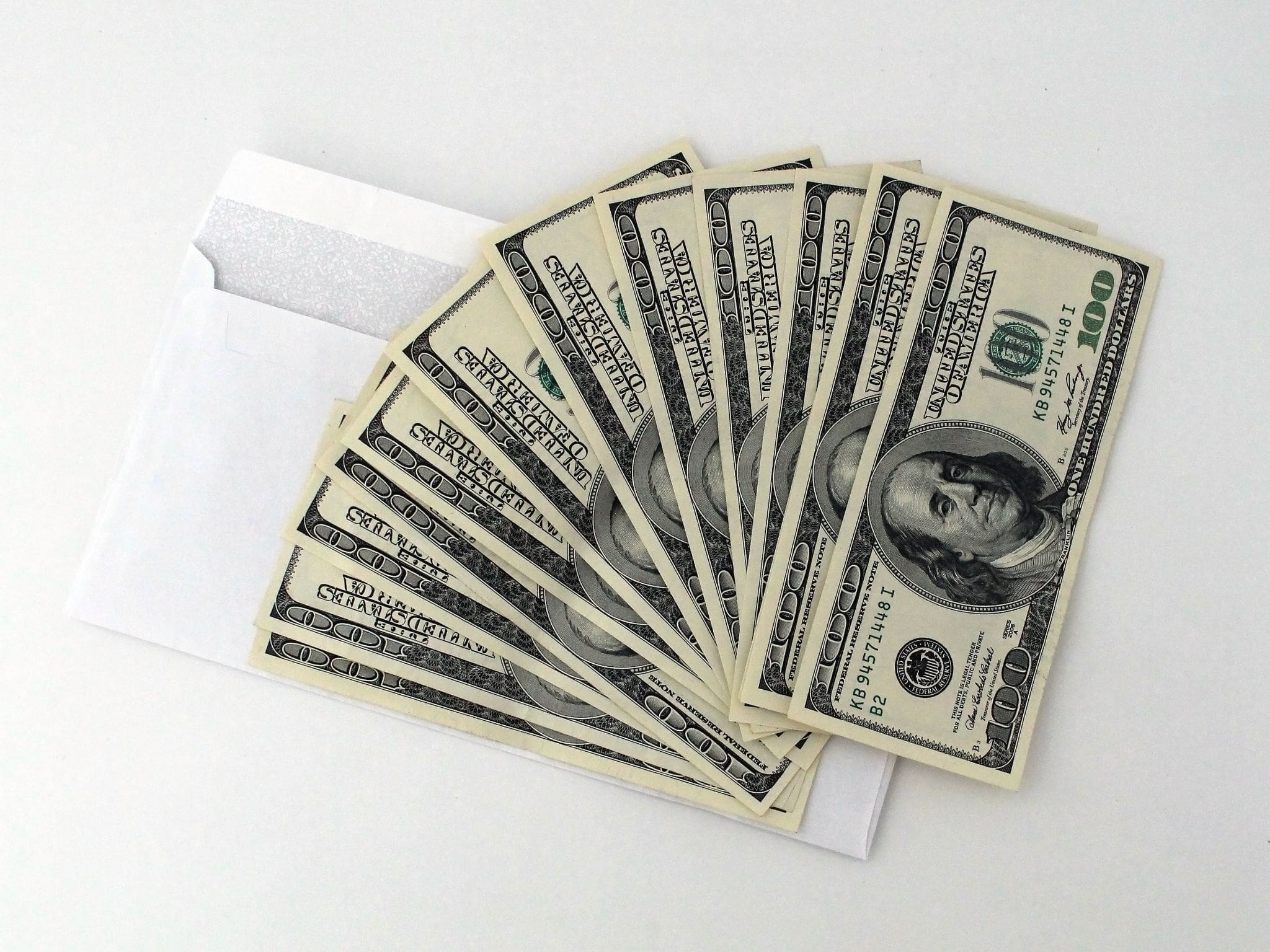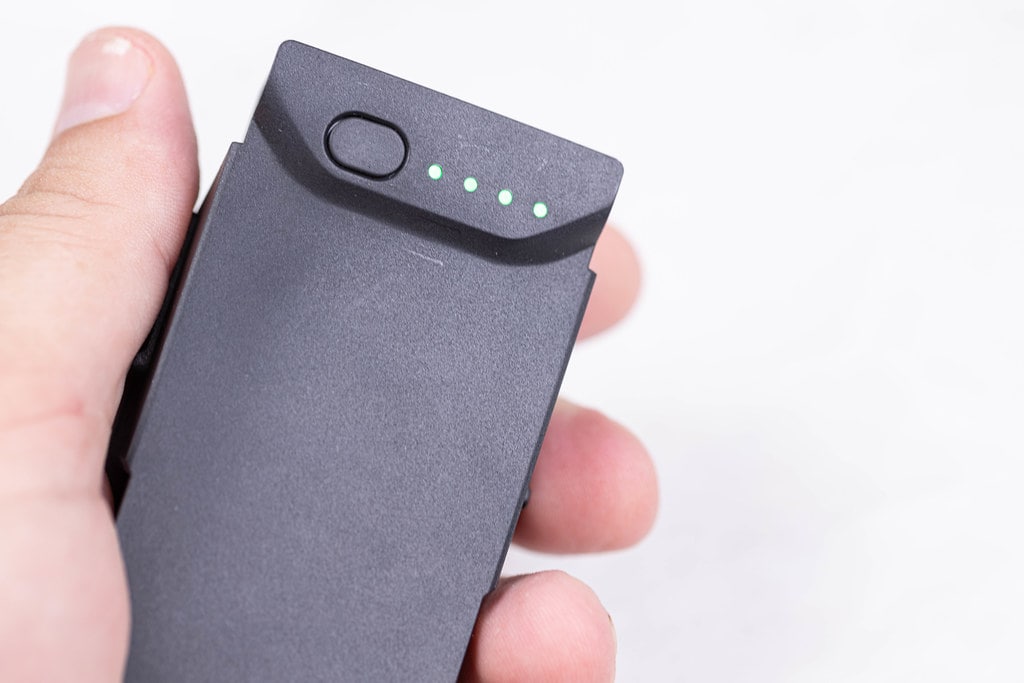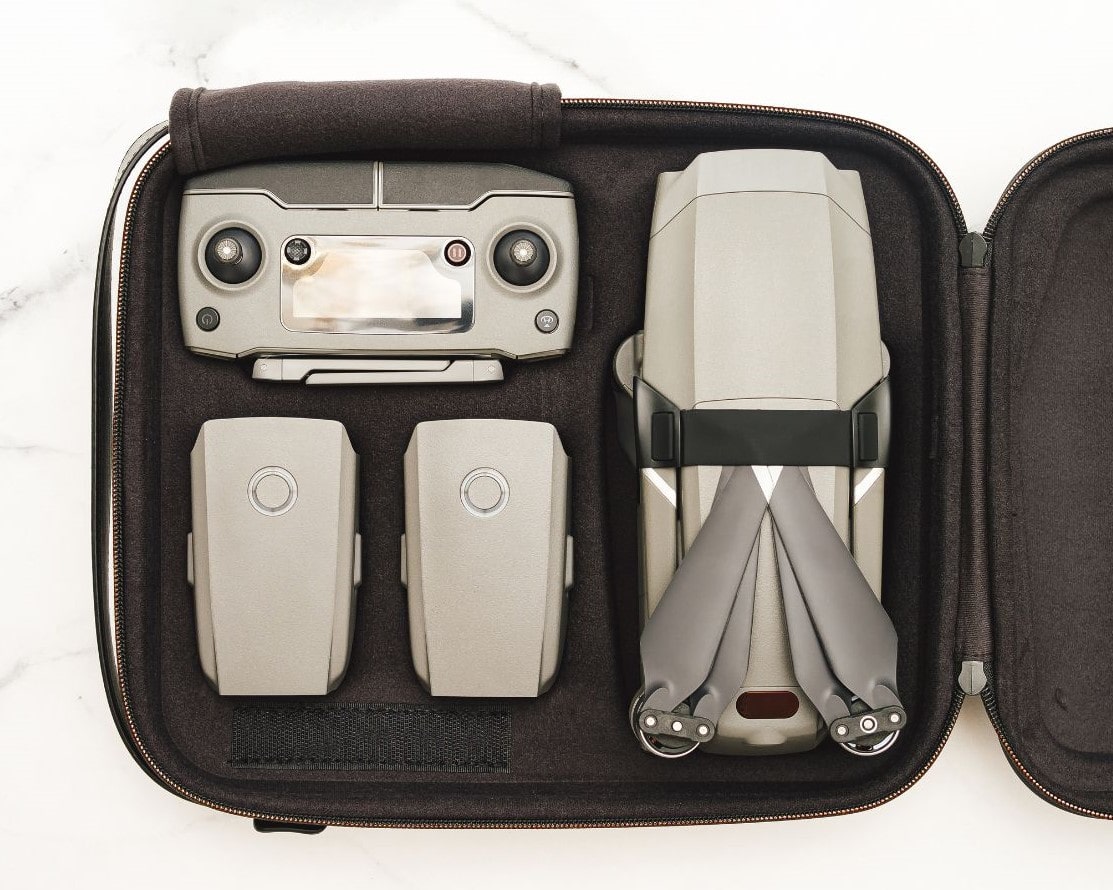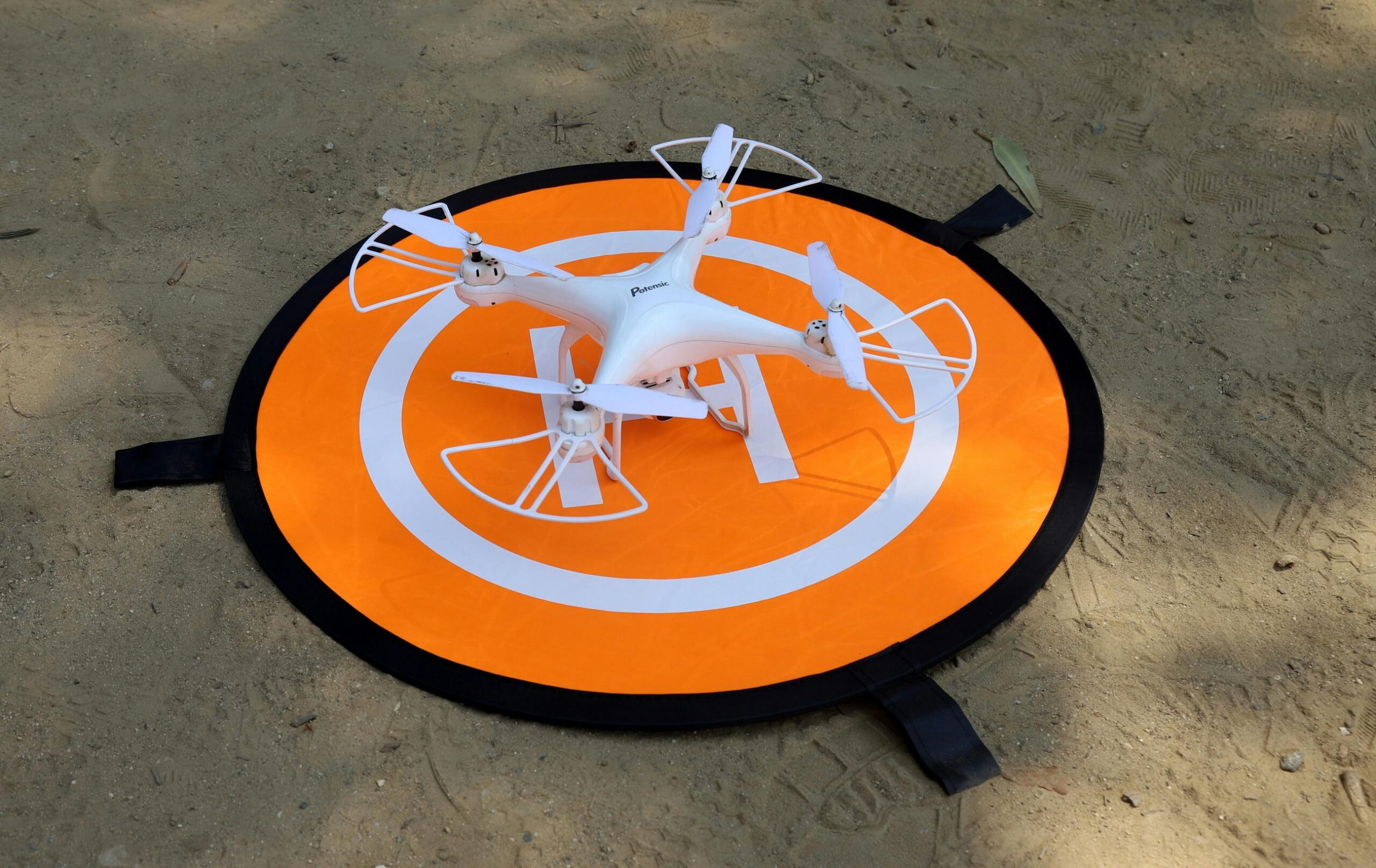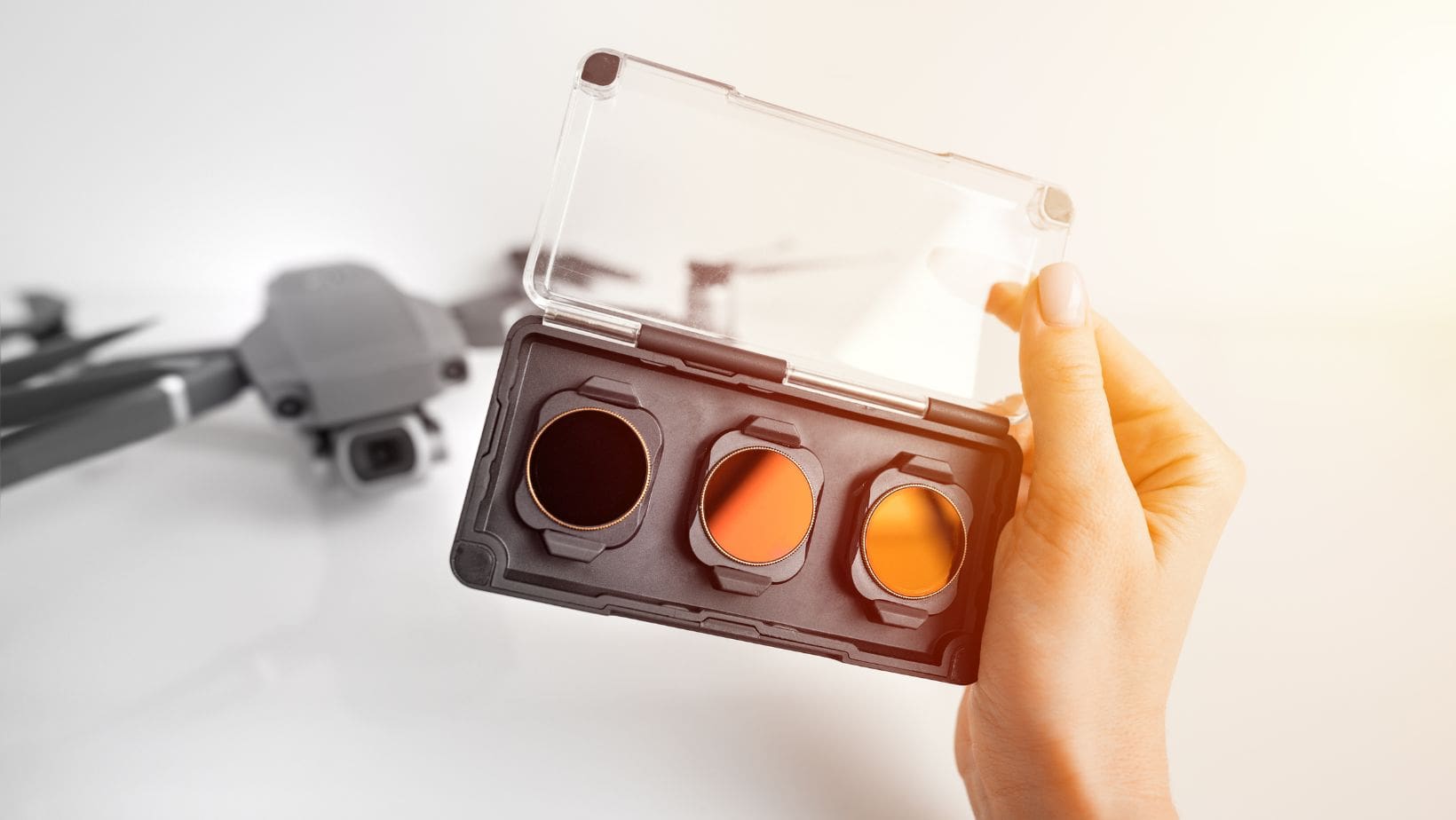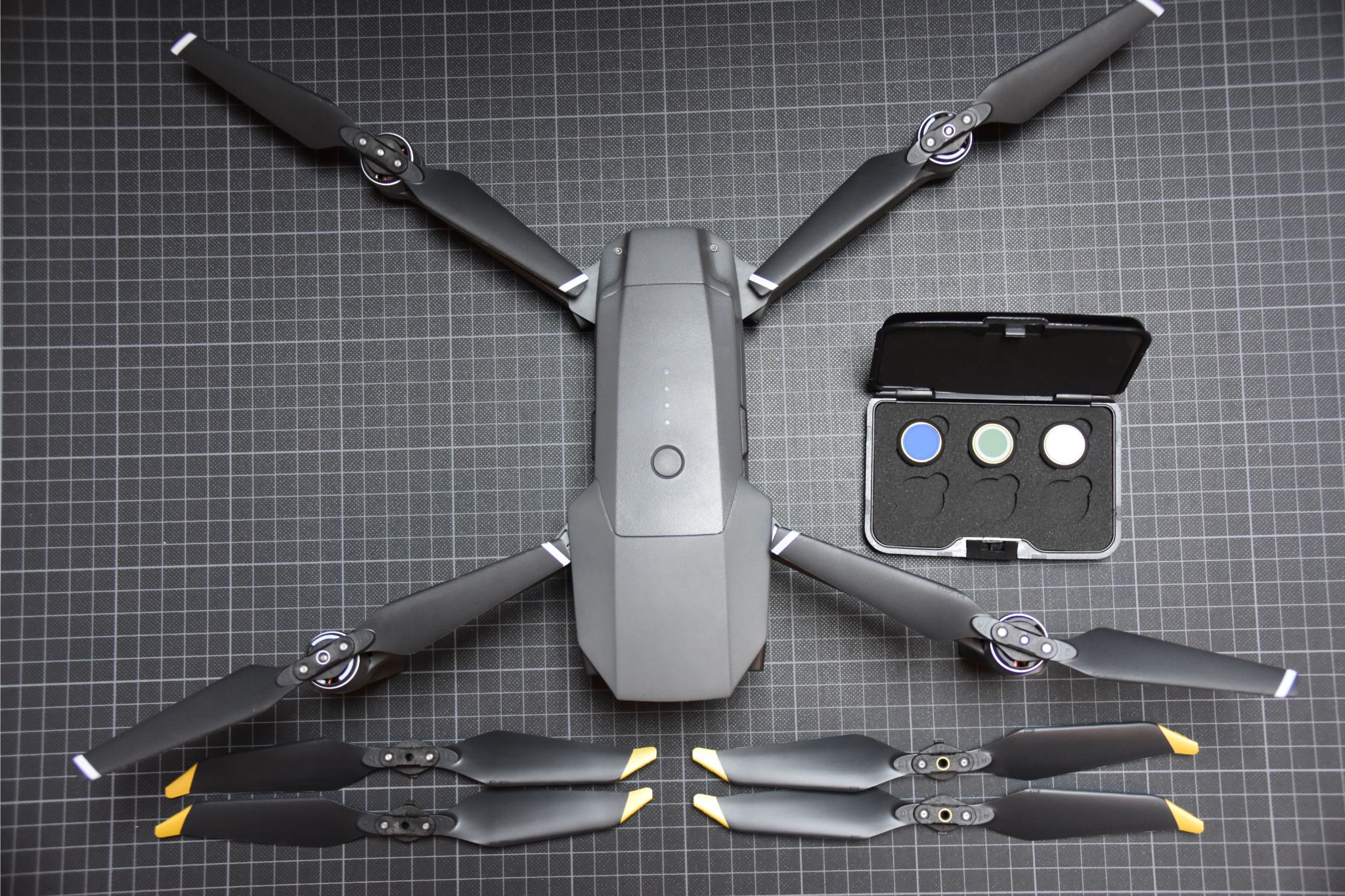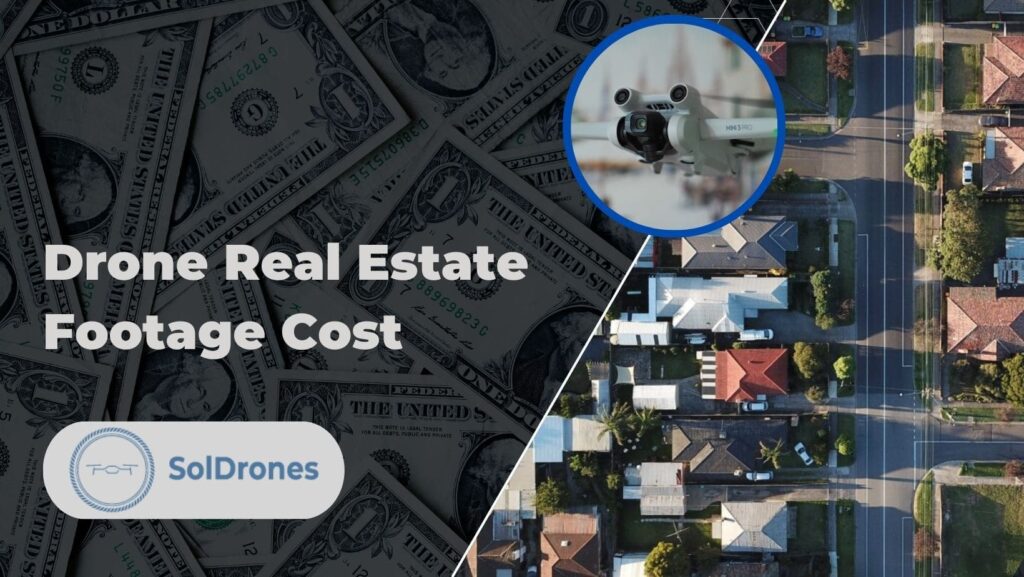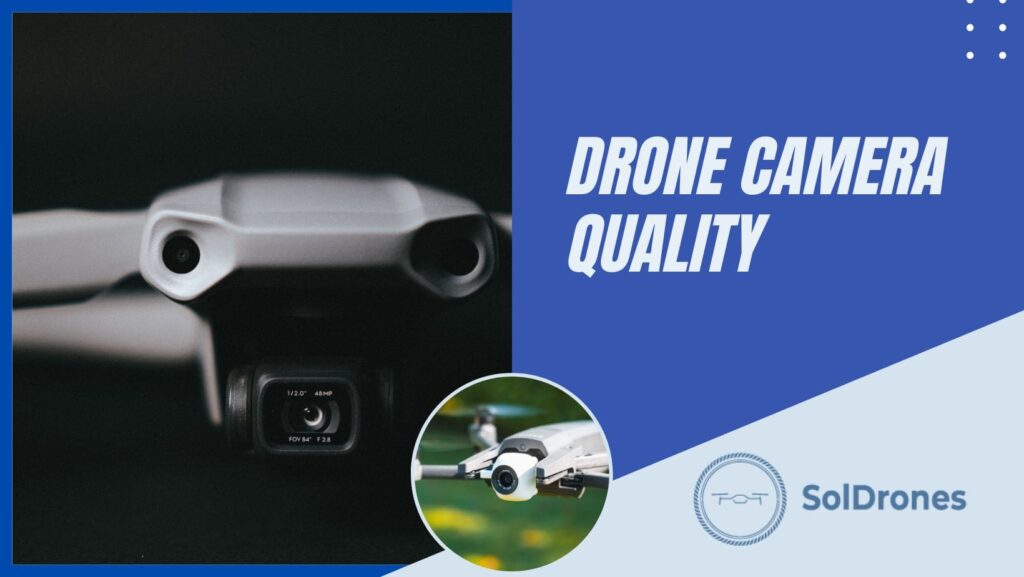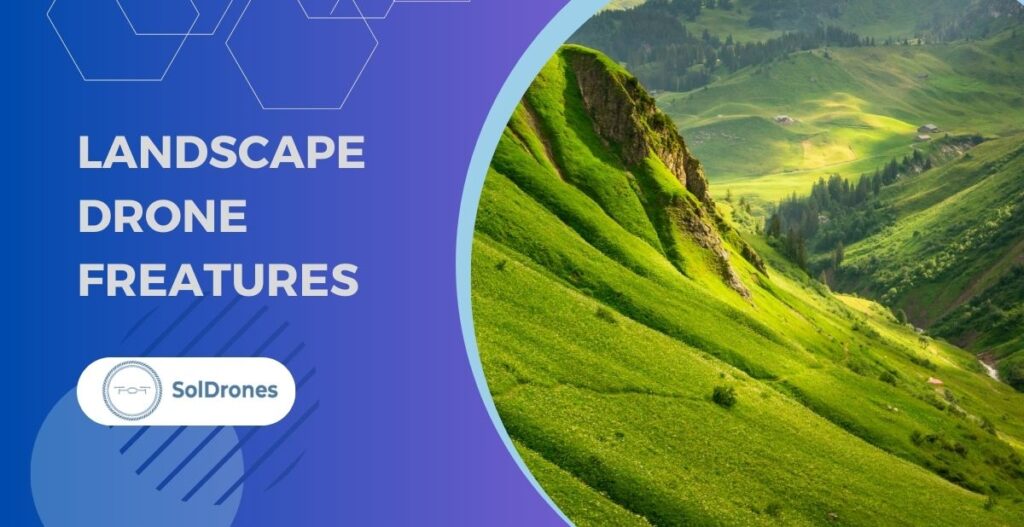Soaring through the skies, capturing breathtaking aerial footage, and transforming perspectives – the world of drone technology is revolutionizing industries and igniting entrepreneurial dreams.
If you’re captivated by the potential of unmanned aerial vehicles (UAVs) and envision yourself as a drone business owner, the question that lingers is: how much does it really cost to start a drone business?
Before saying yes on this exciting journey, it’s crucial to understand the financial aspects of establishing a drone business.
This comprehensive guide will go into the essential costs, additional considerations, and cost-saving strategies, empowering you to make informed decisions and navigate the path to success.
And, if you haven’t picked up your first drone yet, the DJI Mini 4 Pro or DJI Mini 3 Pro are great options to consider for a very affordable price.
Whether you’re a seasoned drone enthusiast, a curious newcomer, or you have a drone license, this guide will equip you with the knowledge to assess your financial readiness, prioritize expenses, and transform your drone business aspirations into a reality.
Article Highlights:
- Explore the financial journey of starting a drone business, from choosing the right drone to managing ongoing operational costs.
- Discover essential tools for drone entrepreneurs, including cost-effective drones, vital accessories, and video editing software.
- Learn about the significance of drone insurance, regular maintenance, and the importance of long-term financial planning for drone businesses.
Starting a drone business requires a careful analysis of initial investments and ongoing operational costs.
Essential Equipment and Costs
Here is a detailed breakdown of essential equipment and costs for starting a drone business:
Types of Drones for Commercial Use
Commercial drones can be overwhelming, given the many options available. To help you make informed decisions, here’s an overview of common drone categories and their respective cost ranges:
Entry-Level Drones:
Ideal for beginners or those seeking a budget-friendly option, these drones, like the DJI Mini 3 Pro, offer basic functionality and features, making them suitable for recreational drone pilots or simple commercial applications.
- Estimated Cost Range: $500 – $1,000
Mid-Range Drones:
These drones provide a balance between affordability and advanced features, catering to a wider range of commercial applications, such as aerial photography, videography, and inspection. A solid mid-range drone would be the Autel Robotics Evo 2 Pro V3 or DJI Phantom Pro Plus V2.0.
- Estimated Cost Range: $1,000 – $3,000
High-End Drones:
These drones are designed for professional use and offer exceptional performance, advanced features, and superior image quality, making them suitable for demanding commercial applications, including cinematography, mapping, and surveillance. The DJI Matrice 300 RTK would be an example of a high-end drone. .
- Estimated Cost Range: $3,000 – and up
Necessary Accessories and Additional Equipment
[Image: add images of these accessories and additional equipment]
To maximize the potential of your flying drone and ensure smooth operations, consider investing in the following essential accessories:
- Extra Batteries: Extended flight time is crucial for commercial operations. Additional batteries are a must-have to avoid disruptions and maintain productivity.
- Carrying Case: A sturdy and well-padded carrying case protects your drone and accessories from damage during transportation and storage.
- Landing Pads: These provide a stable and safe landing surface for your drone, preventing potential damage and ensuring consistent landings.
- Lens Filters: Enhance the quality of your aerial footage with lens filters that reduce glare, adjust color balance, and cater to specific lighting conditions.
- Replacement Propellers: Accidents happen, and having spare propellers on hand ensures you’re always ready to take flight.
Estimated Cost Range for Accessories: $200 – $500
Importance of Video Editing Software
Transforming raw aerial footage into captivating and professional-grade content requires powerful video editing software.
Here are some recommended options and their respective pricing:
- DaVinci Resolve: A comprehensive and versatile software with a free version offering a full suite of editing and color correction tools.
- Blender: Another free option with a growing user base, Blender offers a range of editing features and 3D animation capabilities.
- Adobe Premiere Pro: A popular industry standard for every drone pilot, Adobe Premiere Pro provides advanced editing tools, color correction, and integration with other Adobe Creative Cloud products.
- Final Cut Pro: A powerful and user-friendly option for Mac users, Final Cut Pro is known for its intuitive interface and efficient editing workflow.
Estimated Cost Range for Video Editing Software: $0 – $500
Operational Costs of Running a Drone Business
Protecting your drone business from potential liabilities and damages is paramount. Insurance for drones provides financial protection against accidents, property damage, personal injury, and other unforeseen events.
Drone Insurance
1) Types of Insurance for Drones
- Liability Insurance: Covers damage or injuries to third parties caused by the drone. Essential for commercial operations.
- Hull Insurance: Protects against physical damage to the drone itself.
- Payload Insurance: Covers damage to equipment carried by the drone, like cameras or sensors.
- Ground Equipment Insurance: Protects ground-based equipment used to operate the drone.
- Non-Owned Insurance: For businesses that rent or lease drones.
2) Average Costs of Drone Insurance
- Liability Insurance: Typically ranges from $500 to $750 per year for $1 million in coverage.
- Hull Insurance: Cost varies based on the value of the drone, typically 5-10% of the drone’s value annually.
- Other Insurance Types: Prices depend on coverage limits and specific business needs.
Maintenance and Upkeep
1) Regular Maintenance Costs for Drones
- Routine Inspections: Checking for wear and tear, firmware updates, and battery health. Cost: Generally minimal, mostly requiring the pilot’s time.
- Propeller Replacement: Regular replacement or after any damage. Cost: $10 – $100 per set, depending on drone model.
- Battery Replacement: Drones typically require new batteries every 200-300 charge cycles. Cost: $45 – $200 each.
- Calibration and Repairs: Professional calibration and repairs as needed. Cost: Can vary widely based on the extent of repairs, starting from $50 to several hundred dollars.
2) Preventative Maintenance
Regular cleaning and storage in proper conditions extend the drone’s and its accessories’ lifespan.
3) Software Updates
Keeping the drone’s firmware and navigational data up to date. Cost: Generally free, but requires time and a stable internet connection.
Understanding these operational costs is crucial for anyone planning to start a drone business, as it impacts long-term budgeting and pricing strategies for services offered.
Long-term Financial Planning
Estimating Drone Pilot License Renewal Costs
Maintaining your Remote Pilot Certificate (Part 107) or the FAA drone license requires regular renewal every 24 months.
The estimated cost for renewal of a drone license is $150. While this expense may seem minor, factoring it into your long-term financial planning is crucial to avoid any unexpected financial strain.
Tips for Managing Remote Pilot Certificate or FAA Drone Pilot License Renewal Costs:
- Set aside a dedicated fund or budget line specifically for drone license renewal fees.
- Consider enrolling in a commercial drone training course or workshop to enhance your skills and knowledge, which may increase your earning potential and offset the renewal costs. It will also help you learn about flight restrictions and flight operation airspace classification in controlled airspace.
- Explore opportunities to expand your services or target higher-paying clients to generate additional revenue to cover renewal fees.
Budgeting for Future Equipment Upgrades
The technology behind the drone operators and every licensed drone pilot is constantly evolving, introducing newer and more advanced drones with enhanced features and capabilities.
While these upgrades can be tempting, it’s essential to approach equipment purchases strategically to avoid unnecessary expenses.
Tips for Managing Future Equipment Upgrades:
- Conduct thorough research and assess the need for an equipment upgrade before purchasing.
- Consider renting or leasing high-end drones for specific projects or periods of increased demand, rather than committing to a permanent purchase.
- Utilize trade-in programs or sell your existing equipment to recoup some of the costs when upgrading.
- Prioritize upgrades that directly enhance your business operations, such as those that improve image quality, range, or flight time.
Additional Long-term Financial Planning Strategies:
- Establish a diversified revenue stream by offering a variety of drone services, catering to different industries and client needs.
- Invest in marketing, especially in social media, and branding initiatives to increase visibility and attract new clients.
- Negotiate favorable terms with suppliers and service providers to minimize operational costs.
- Seek guidance from experienced drone business owners or financial advisors for tailored advice.
Training and Skill Development
As a drone pilot, obtaining a permanent Remote Pilot Certificate (Part 107) from the Federal Aviation Administration (FAA Airman Certificate), also known as FAA drone license, is mandatory for commercial drone operations.
The Remote Pilot Certificate and drone license ensure that you possess the necessary knowledge and skills to operate drones safely and responsibly in the airspace.
Becoming a Certified Drone Pilot
Training Programs and Costs:
Numerous training programs and resources are available to prepare you as a drone pilot for the FAA drone license and drone registration.
These options vary in format, duration, and cost, allowing you to choose the most suitable approach for your learning style and budget.
- Online Courses: Online courses offer flexibility and self-paced learning with comprehensive study materials, practice questions, and mock exams. Estimated cost: $100 – $200
- In-Person Training Camps: Immersive in-person training camps provide hands-on experience with drones, personalized instruction, and direct interaction with experienced drone instructors. Estimated cost: $200 – $500
- FAA-Approved Test Preparation Centers: These centers offer official FAA practice exams and proctoring services to simulate the actual exam environment. Estimated cost: $150 – $200
Tips for Choosing a Training Program:
- Assess your learning style and preferences: Determine whether you prefer online, in-person, or blended learning experiences as a drone pilot.
- Evaluate instructor credentials and experience: Ensure the instructors are FAA-certified and have extensive experience in drone operations.
- Review course curriculum and study materials: Verify that the course covers all the required topics for the Part 107 exam.
Advanced Certifications for Specialized Drone Operations
As you gain experience and expand your drone business, know that your drone license is not enough; consider pursuing advanced certifications to specialize in specific areas, such as aerial photography, inspection, surveying, or agricultural applications.
These certifications demonstrate your expertise as a drone pilot and can attract higher-paying clients.
Examples of Advanced Certifications:
- Certified Aerial Photographer (CAP): Offered by the Professional Aerial Photographers Association (PAPA), this certification validates your proficiency in aerial photography techniques and image quality.
- Certified Infrared Thermographer (CIT): Offered by the Infrared Training Center (ITC), this certification equips you with the knowledge and skills to conduct drone thermal imaging inspections.
- Precision Agriculture Drone Specialist (PADS): Offered by the Drone Pilots Association (DPA), this certification demonstrates your expertise in precision agriculture applications, such as crop monitoring and spraying.
Benefits of Advanced Certifications:
- Enhanced credibility and expertise: Distinguish yourself from competitors and attract clients seeking specialized drone services.
- Command higher rates: Advanced certifications can justify charging premium rates for your specialized services.
- Career advancement opportunities: Open doors to new job opportunities and specialized roles in the drone industry.
How Can I Save Money on the Costs of Starting a Drone Business?
There are a few ways to save money on the costs of starting a drone business:
- Purchase refurbished drones or consider entry-level models for beginners.
- Utilize free study materials and prepare thoroughly to reduce the need for retakes of the Remote Pilot Certificate (Part 107) exam.
- Compare insurance quotes from different providers and consider coverage options tailored to your specific operations.
- Utilize free video editing software like DaVinci Resolve or Blender for cost-effective solutions.
Final Thoughts
Starting a drone business requires a careful analysis of initial investments and ongoing operational costs.
From selecting the right drone and accessories to understanding the intricacies of insurance, maintenance, and acquiring a drone license, each aspect plays a pivotal role in shaping the financial landscape of your drone enterprise.
Moreover, long-term financial planning is essential for sustained success and growth, including budgeting for equipment upgrades and renewing pilot licenses.
This comprehensive guide serves as a valuable resource, offering aspiring commercial drone pilots a clear roadmap to financially navigating their entrepreneurial dreams.
With the right planning and knowledge, transforming your passion as an FAA-certified drone pilot into a thriving business is a possible and reachable goal.
Whether you’re a novice or an experienced pilot, this guide equips you with the necessary tools and insights to soar high in flying drones.
FAQs
How often do I need to renew my commercial drone pilot license, and what is the cost?
The FAA requires you to renew your Remote Pilot Certificate every two years. The renewal process involves passing a recurrent knowledge test, costing approximately $150-$160.
Should I budget for future equipment upgrades and recreational UAS safety test?
Yes, budgeting for future equipment upgrades and recreational UAS safety test are essential as drone technology evolves rapidly. Set aside a portion of profits for upgrades or consider leasing options to stay current with technology.
What are some ways to reduce costs when starting a drone business?
To reduce costs, start with a mid-range drone, buy only essential accessories, use free or low-cost video editing software, and focus on building skills and clientele before investing in high-end equipment.
What is the long-term financial outlook for drone businesses?
The long-term financial outlook for drone businesses is very positive. The demand for drone services is expected to grow significantly in the coming years, and commercial drone pilots with the right skills and experience can earn a good living.
How important is drone insurance, and can I operate without it?
Drone insurance is crucial for protecting your business against liabilities and damages. Operating without it could result in significant financial losses in case of accidents or damage. Liability insurance is highly recommended.
Are there any hidden costs in starting a drone business?
Beyond the obvious costs like drones and insurance, hidden costs may include marketing, travel expenses for on-site operations, legal fees for business registration, and potential fees for airspace authorizations in controlled areas.

